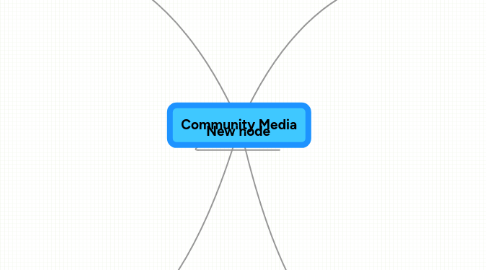
1. Community Media Policy
1.1. Governance
1.1.1. Strategy
1.1.2. tactic
1.1.3. process
1.1.4. Procedure
1.1.5. Programme
1.2. Public Philosophy
1.2.1. Society Designates
1.2.1.1. Values
1.2.1.2. beliefs
1.2.1.3. Biases
1.2.2. Corporate Liberalism
1.2.2.1. Product of Social Choices
1.2.2.2. Product of Political Choices
1.2.3. Freedom of Speech
1.2.3.1. Guides and Informs the Ways in which Broadcasting is Managed
1.3. Policy Analysis
1.3.1. Government
1.3.2. Economy
2. Overview of Chapters
2.1. Chapter1
2.1.1. Alternative Media Theory
2.1.1.1. Empowerment & Citizenship
2.1.2. Political Theories
2.1.2.1. Liberalism & Communitarianism
2.2. Chapter 2
2.2.1. Access
2.2.1.1. Free speech Concept
2.2.1.1.1. Anyone can broadcast anything
2.2.1.2. Station Management Policies & Legal Contracts and License that Permit Access
2.2.1.2.1. Consequences of both on Access
2.3. Chapter 3
2.3.1. European Community
2.3.1.1. Radio and Television
2.3.1.1.1. Decentralization
2.3.1.1.2. Amateurism
2.4. Chapter 4
2.4.1. Australia's Media Policies
2.4.1.1. Identities
2.4.1.1.1. Globalization
2.4.1.1.2. New Technologies
2.4.1.2. Policy Dilemmas
2.4.1.2.1. Localism
2.4.1.2.2. Financial Models
2.4.1.2.3. Spectrum Allocation
2.5. Chapter 5
2.5.1. Development in First World Countries & Third World Countries
2.5.1.1. Design to Achieve Economic or Political Outcomes
2.5.1.1.1. Community Media cannot meet these goals
2.6. Chapter 6
2.6.1. New Technologies
2.6.1.1. Internet
2.6.1.1.1. Created Participation that is Collaborative and Voluntary without Permission
2.6.1.2. Digital Broadcasting
2.6.1.2.1. Move from Oppositional to Generative policies
2.7. Chapter 7
2.7.1. Reviews Previous Chapters
2.7.1.1. Participation in media Enforce Political Participation
2.7.1.1.1. E-government
3. New node
4. Definition Community Media
4.1. Needs Access & Participation
4.1.1. Global Media
4.1.1.1. Local Television
4.1.1.2. Microradio
4.1.1.3. Public Access Television
4.1.1.4. Local Newsletters
4.1.1.5. Indymedia
4.2. Organizational structure
4.2.1. Finances
4.2.2. Audiences
4.3. Production Techniques
4.3.1. Radio
4.3.1.1. Most Parts of World
4.3.1.1.1. Inexpensive
4.3.1.1.2. Easy to Produce
4.3.1.1.3. Areas that have low literacy
4.3.2. Television
4.3.2.1. First World Countries
4.3.2.1.1. More Expensive
4.3.2.1.2. Reaches larger Audiences
4.4. Programming
4.4.1. Exists within Regulated Media Environments
4.4.1.1. Government Endorses Community
4.4.1.1.1. Attention
4.4.1.1.2. Status
4.4.1.1.3. Resources
5. Analogue to Digital Broadcasting
5.1. Analogue Broadcasting
5.1.1. One-way Technology
5.1.2. Highly Regulated
5.1.2.1. Cultural Protection
5.1.2.2. Economic Stability
5.1.2.3. Technical Reasons
5.1.2.3.1. Spectrum Allocation
5.2. Digital Broadcasting
5.2.1. Internet
5.2.1.1. Widespread Participation
5.2.1.2. Distribute on Internet without Regulation
5.2.2. Digital Television
5.2.2.1. More Information in the Same Space
5.2.2.1.1. Undermines "Spectrum Scarcity" Argument
5.3. Civil Society
5.3.1. Product of Modern Liberal Democracies
5.3.1.1. Political Changes
5.3.1.1.1. Participatory Communications Approaches to Third World Development
5.3.1.1.2. New Media Theory
